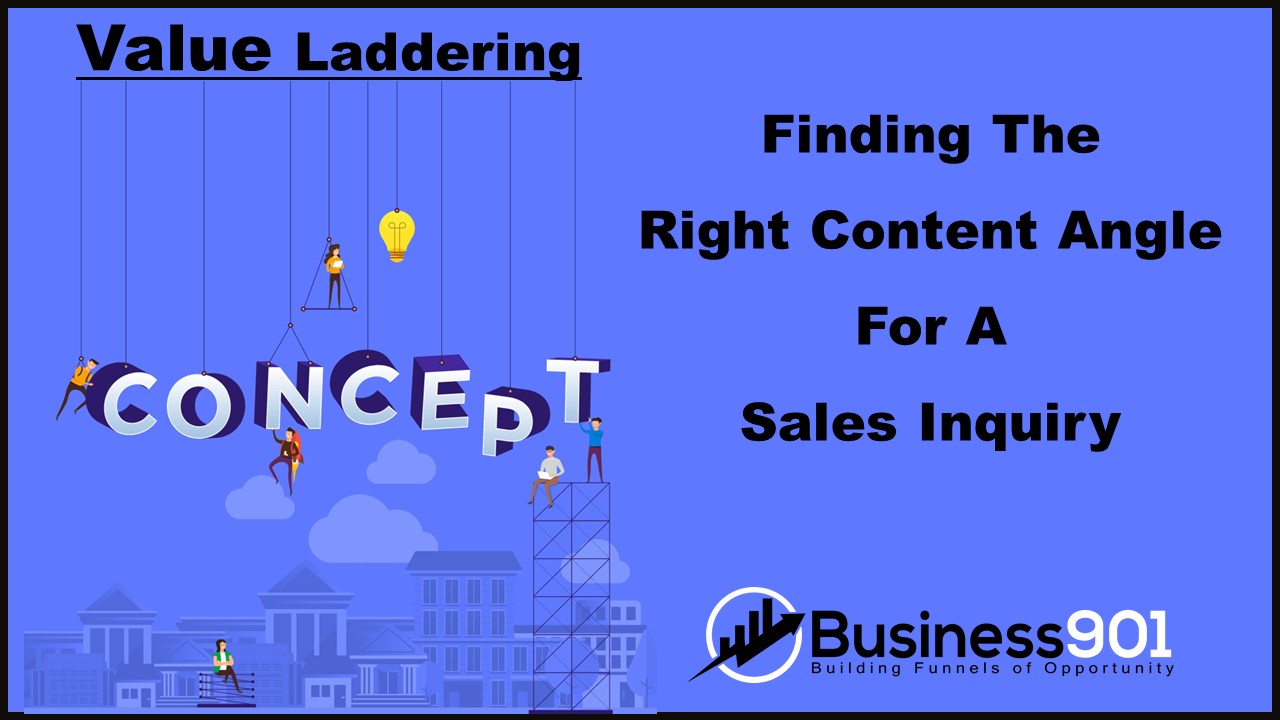Designing Sales Inquiries is about creating opportunities for salespeople to work with customers through content in practical ways initiated and sustained by questions, structured through tasks, and enabled with resources. The beginning of the Sales Inquiry starts with finding a content angle as represented in our existing capabilities is a vital first step.
We rely on various methods to define, organize, and locate the right conditions to create useful content. It may be that finding the ideal content angle is a deductive process in which the big idea comes first, or it might begin with more focused content. Starting with capabilities might seem straightforward; all you have to do is pick a capability and head to the inquiry design track, but it is not that simple in practice. Sales inquiry design isn’t as easy as it sounds. It is a multiphase, context-based, collaborative, complex, and individualized to the customer. process.
– Paraphrased from Inquiry Design Model: Building Inquiries in Social Studies by Kathy Swan, John Lee, and S.G. Grant
What is a Content Angle? A content angle is the core of our sales inquiry’s message, delivered to customers via a specific format. When customers receive content from a salesperson, they judge it on its value and relevance to their current situation. The customer will view the content angle as a pivotal point. Their reaction to the content angle will determine how the rest of the sales process goes for the customer. The content angle’s function is to frame the sales inquiry, providing a clear and concise message about the value of what is being offered. Potential customers will look for angles to reveal how the content can benefit them. Your sales inquiry’s content angle should be consistent with what you do best and what your customers want and need.
Finding the right content angle for a sales inquiry: As we begin finding the right angle for the inquiry, we have to keep in mind that we are not starting from scratch but are trying to build on a framework that already exists. Put another way, we are not creating the content but finding it. The right content angle must be selective and efficient to avoid overwhelming the customer. This requires a clear understanding of the capabilities and resources available to us. We have to be able to establish the precise conditions that define these things. We must look at our context and understand how to shape the requirements and capabilities to meet the needs of our potential customers. We have to see what we have and understand how to use it.
Defining Capabilities: Capabilities describe what we do particularly well. They are broad enough to include a range of scenarios yet specific enough to be meaningful. They are usually descriptions of what we know how to do. They may be skills, knowledge, or tools. They may also be focus areas such as customer segments, types of products, or sales cycle stages. Capabilities are useful for organizing information and guiding our decision-making. It can help to define capabilities as being “specific”, “precise”, “focused”, “predictive”, “diagnostic”, “holistic”, and “relevant”. Any capability with these traits is a good candidate to be a content angle.
Shaping our Capabilities: For the most part, we will use existing capabilities as the foundation for our content angle. You may need to shape the capabilities by realigning them with the specific needs of the sales inquiry. You can do this by asking yourself questions that will help you define and shape the capabilities into a form that is relevant and useful to the sales inquiry.
- Is the capability clear and concise?
- What is the underlying value of the capability?
- Is the capability brandable?
- Can the capability be used across a range of sales scenarios?
By answering these questions, you will better understand how to shape your capabilities into a relevant and useful form for the sales inquiry.
Applying Rigor and Relevance to the Content Angle: We must be diligent in applying rigor and relevance to the capabilities we will use in our content angle. We want to ensure we use the right capabilities for the sales inquiry. It is important to remember that we do not wish to select capabilities that only apply to a small segment of customers. We want to ensure we are using capabilities that apply to most customers. We want to avoid using capabilities that apply to only a few customers. Suppose we are using capabilities that apply to too few customers. In that case, we risk alienating the rest of the potential customers by excluding the ones that the capability is meant to serve. If we use capabilities that apply to too many customers, the message would be diluted and less valuable because it would apply to too many.
Forming a Proposed Value Proposition: We have selected a content angle and applied rigor and relevance to the capabilities we will use in the angle. We can begin to shape our content angle into a proposed value proposition. A proposed value proposition is what our customer’s experience with the content angle will be. It is their reaction to our content angle. Their perception of the value they will receive from our content angle. It is their expectation of what they will get from our content angle. Their projected view of the results they will achieve by engaging with our content angle.
- A proposed value proposition is built from the following elements:
- A problem that your target audience is facing.
- A unique and desirable solution that your content angle provides.
- The target audience will receive a quantifiable outcome from engaging with your content angle.

